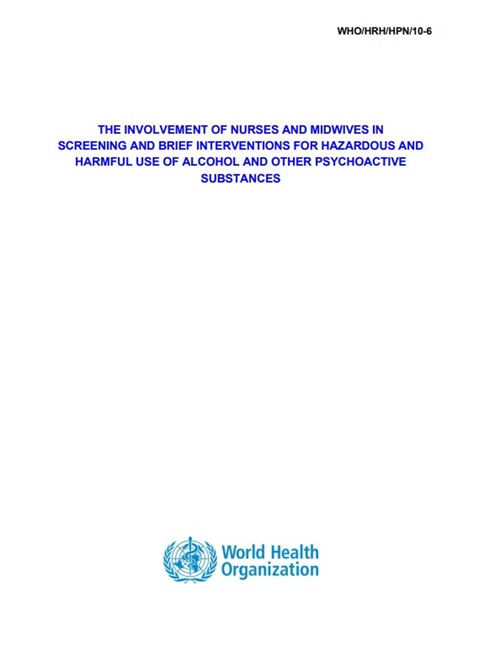Involvement of nurses and midwives in screening and brief interventions for hazardous and harmful use of alcohol and other psychoactive substances

Overview
Psychoactive substance use can result in a wide range of health and social problems for individuals, their families and the wider community. Globally, about two billion people use alcohol (WHO 2007) and it is estimated that between 172 and 250 million persons used illicit drugs at least once in the past year in 2007 (UNODC 2009). About 2.5 million deaths are attributable to the use of alcohol and about 200 000 to the use of illicit drugs. (WHO 2009).
Harmful alcohol use accounts for 4.5% of the global burden of disease and is responsible for 3.8% of all deaths worldwide (WHO 2009). Rates of death attributable to alcohol are the highest in Europe and the countries of the American continent and are rising in all six WHO regions. Illicit drug use is also a major concern for the developed and developing world (UNODC, 2009; UNODC/WHO 2008). Psychoactive substance use and substance use disorders can result in a wide range of health and social problems for individuals, their families and the wider community (WHO 2004b, 2007). It is estimated that worldwide there are about 25 million people with drug dependence (UNODC/WHO 2008). Cannabis is the most commonly used illegal substance and accounts for an estimated 80% of illicit drug use worldwide (Hall et al. 2006). The next most commonly used illegal psychoactive substances are stimulants, which include amphetamines (29.6 million people), cocaine (13.3 million people) and ecstasy (8.3 million people) (Hall et al. 2006). Data on the size of the injecting drug use population indicate that there are about 15.9 million people injecting drugs worldwide (Mathers et al, 2008), although it is acknowledged that it is difficult to produce precise figures. Injecting drug use, a growing phenomenon, is reported in 148 countries (Mathers et al, 2008), with 0.4% of deaths worldwide attributable to it (WHO 2009). The use of stimulants such as amphetamine has increased rapidly in Asia and Europe (WHO 2004b), with evidence of a substantial increase in the use of crack and crack cocaine in Europe (EMCDDA 2007), South Africa (Parry et al. 2007) and the Americas (UNODC, 2009). The non-medical use of tranquillizers and 2 analgesics is also thought to be considerable, although statistics on this are not available for many countries.
